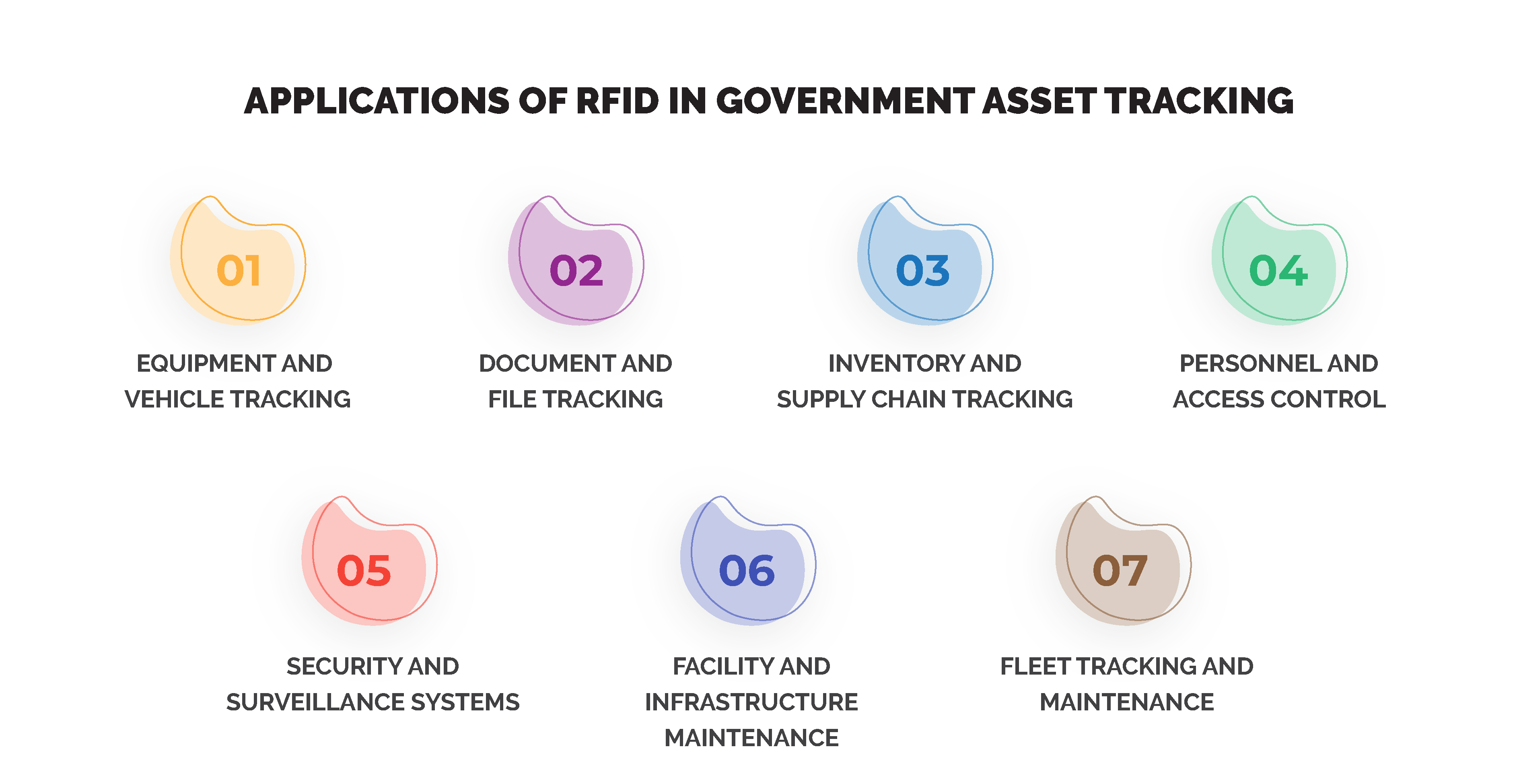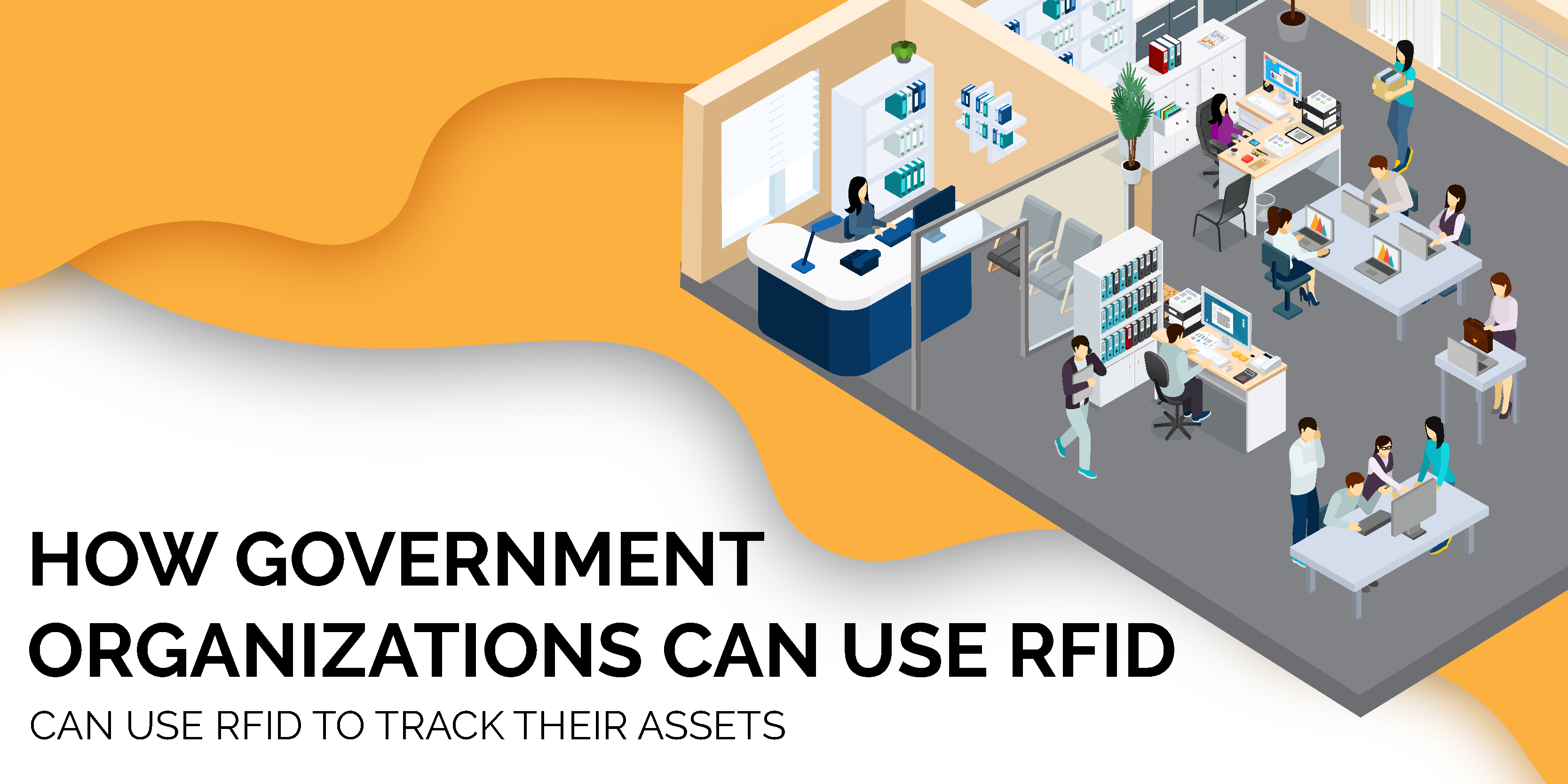In today’s digital age, government organizations are increasingly turning to RFID (Radio Frequency Identification) technology to streamline their asset-tracking processes. RFID offers a sophisticated solution for tracking assets efficiently and securely. This article explores how RFID technology benefits government asset tracking, the challenges it addresses, and best practices for implementation.
Overview of RFID Technology
RFID technology utilizes electromagnetic fields to automatically identify and track tags attached to objects. It consists of RFID tags that store data and RFID readers (fixed or handheld) that capture the information stored on the tags. These components work together with RFID middleware or RFID software, forming a system for data integration and management. The backend system processes the data, allowing for efficient tracking of assets in various applications.
How RFID Asset Tracking Works in Government Organizations
RFID asset tracking in government organizations involves tagging assets with RFID tags, which are then read by RFID readers. This data is transmitted to a central database, enhancing visibility and operational oversight. Government agencies utilize RFID to streamline asset tracking, improve accountability, and enhance efficiency across various departments and sectors.
Types of Government Organizations Can Use RFID Technology
Federal Government Agencies: Implement RFID to track equipment, supplies, and assets across departments like defense, health, and transportation.
State and Local Government: Use RFID for tracking fleet vehicles, equipment maintenance, and inventory tracking in departments such as public works and law enforcement.
Public Health Agencies: Utilize RFID to track medical supplies, vaccines, and equipment for emergency preparedness.
Military and Defense: Implement RFID for tracking weapons, ammunition, and logistics for enhanced operational efficiency.
Law Enforcement: Use RFID to track evidence, equipment, and inventory for improved accountability and chain of custody.
The Main Advantage of RFID Technology in Government Asset Tracking
Increased Accuracy and Efficiency
RFID ensures precise tracking, reducing errors and enhancing asset tracking accuracy.
Asset Visibility
Data capture allows immediate updates on asset locations, enabling proactive decision-making and optimization.
Improved Security and Loss Prevention
RFID enables better security measures by tracking assets and preventing unauthorized movement or loss.
Challenges in Asset Tracking for Government Organizations
Government agencies face challenges such as large-scale asset tracking, diverse asset types, regulatory compliance, and budget constraints.
How RFID Solves These Challenges in Government Organizations
RFID technology addresses government asset tracking challenges by providing accurate, real-time data on asset locations and statuses, enhancing security by monitoring movements and access and improving operational efficiency through automated tracking processes.

Applications of RFID in Government Asset Tracking
Equipment and Vehicle Tracking: RFID technology allows government agencies to track vehicles, heavy equipment, and other assets across different departments. By tagging these assets with RFID tags, agencies can monitor their location, usage, and maintenance needs in real-time, ensuring efficient utilization and cost savings.
Document and File Tracking: RFID facilitates the efficient tracking of the location of important documents and files within government organizations. RFID tags can be attached to files, folders, or boxes, enabling quick retrieval and inventorying. This improves workflow efficiency and reduces the time spent searching for documents.
Inventory and Supply Chain Tracking: RFID technology enhances inventory by tracking and providing visibility of stock levels and supply chains. Government agencies can use RFID to monitor goods movement, track shipments, and manage inventory levels effectively, ensuring the timely availability of essential supplies.
Personnel and Access Control: RFID tags can be used for personnel tracking and access control within government facilities. By issuing RFID-enabled badges or cards, agencies can monitor employee movements, restrict access to secure areas, and maintain a secure environment.
Security and Surveillance Systems: RFID-enabled surveillance and monitoring systems enhance security measures in government facilities. RFID tags can be used to track assets and personnel in real-time, enabling agencies to respond quickly to security breaches or incidents and improve overall security protocols.
Fleet Tracking and Maintenance: RFID technology is used to monitor government fleet vehicles for maintenance and operational efficiency. RFID tags can track vehicle usage, monitor fuel consumption, and schedule maintenance based on actual usage, ensuring fleet vehicles are in optimal condition.
Facility and Infrastructure Maintenance: RFID helps track maintenance schedules and inspections for government facilities and infrastructure. RFID tags can be used to monitor equipment, track maintenance history, and schedule routine inspections, ensuring that facilities are well-maintained and compliant with safety regulations.
Selecting the Optimal RFID System
When selecting the optimal RFID system for government applications, consider factors such as the read range, size, durability, and environmental conditions of RFID tags. For RFID readers, prioritize performance, integration capabilities, and compatibility with existing government systems. It’s crucial to integrate RFID systems with government ERP and asset tracking systems to ensure seamless data synchronization and operational efficiency.
How to Implement RFID in Government Organizations
Plan RFID implementation based on asset types, locations, and tracking requirements across government departments. Install RFID tags and RFID readers in strategic locations to ensure comprehensive asset coverage and data accuracy. Train government personnel on RFID usage and benefits to facilitate adoption and maximize operational efficiency.
Choose the Best RFID Solution Provider
Partner with a trusted RFID solution provider like RFID4U to customize and implement RFID systems tailored to the specific needs of government asset tracking, ensuring optimal performance and efficiency.
Conclusion
RFID technology offers government organizations a powerful tool for enhancing asset tracking, improving efficiency, and reducing costs. By leveraging RFID, government agencies can achieve greater visibility, security, and operational control over their assets, paving the way for smarter and more effective governance.
